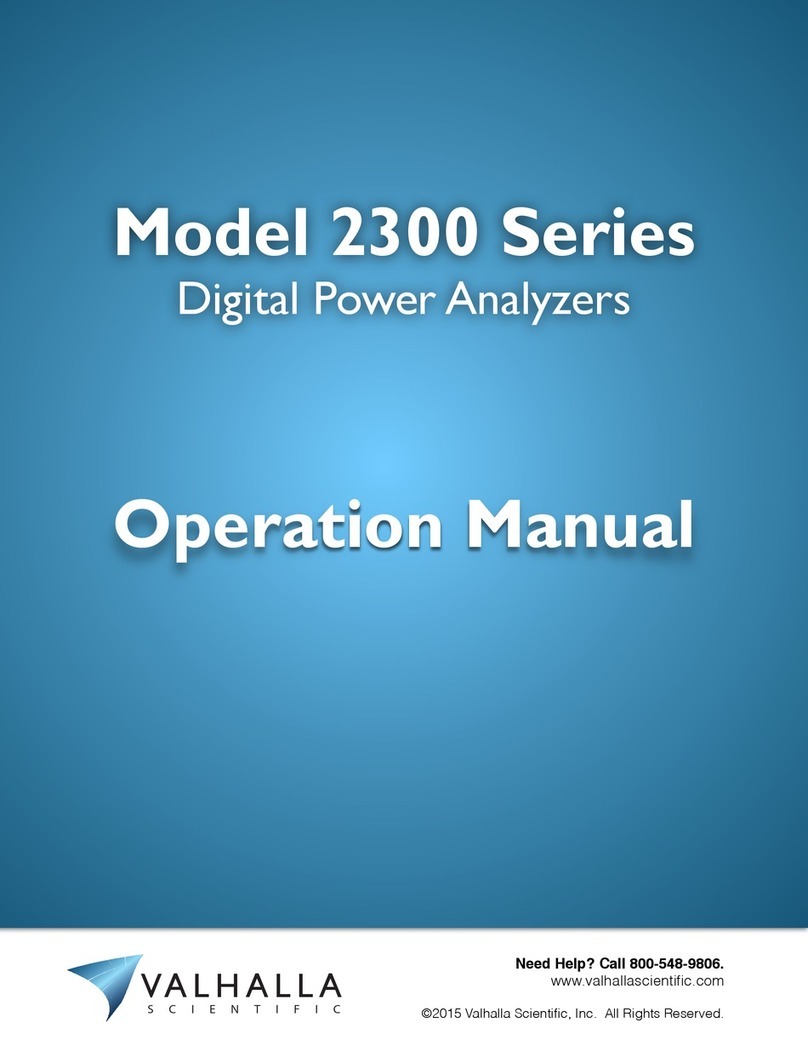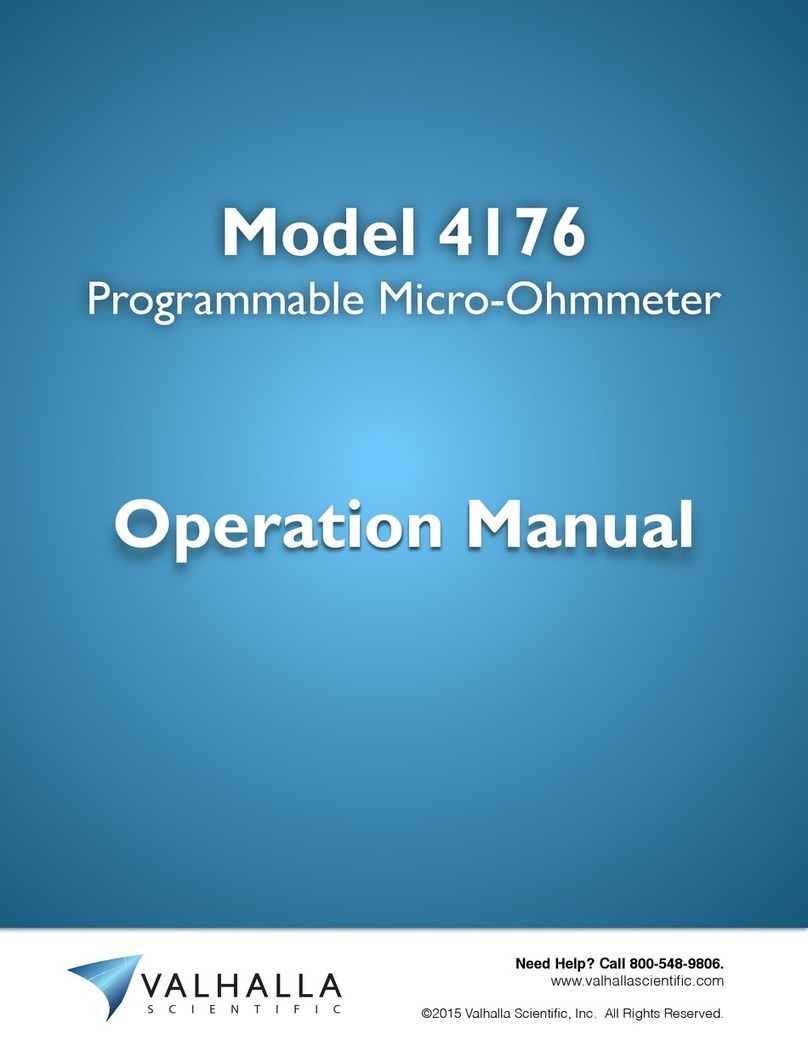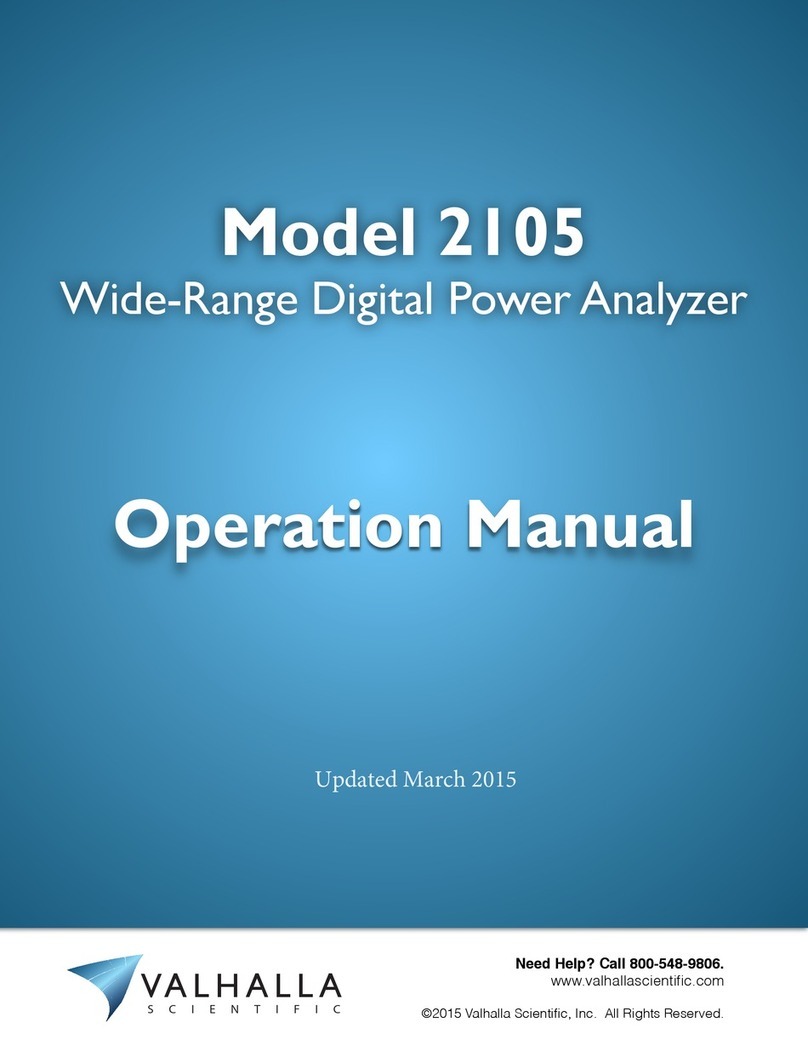
7
Chapter 1 General Information
Introduction
This manual has information to perform Inspection, Installation, Measurement Operations, and
Troubleshooting for Valhalla Scientific 4100 Series. Also included in this manual are:
Specifications, Parts Lists and all Schematics.
The following instruments are part of the 4100 Series Ohmmeters: 4100ATC, 4150ATC, 4165
and 4165-1344
Manual Description
This manual is separated into the 14 following Chapters.
Chapter 1 – General Information
Chapter 1 contains a brief description of the
instrument and other general information.
Chapter 2 – Unpacking and Installing
Chapter 2 contains information for unpacking
and inspection the equipment. Also contains
power requirements and installation procedure.
Chapter 3 - Specifications
Chapter 3 contains all specifications, including
range, resolution, test current, accuracy, general
and physical specifications for Valhalla 4100
Series.
Chapter 4 – Optional Equipment
Chapter 4 contains information on all available
options and test leads for the Valhalla 4100
Series.
Chapter 5 – Front Panel Controls
Chapter 5 describes the function of the front
panel button, switches, adjustments, terminals
and visual display.
Chapter 6 – Rear Panel Connections
Chapter 6 describes the use of the rear panel
connections such as power connector, fuseholder
and interface connectors.
Chapter 7 – Manual Operations
Chapter 7 describes all operations including
connections, zero adjustments and temperature
compensation.
Chapter 8 – Interface Operation
Chapter 8 contains information on the optional
interface outputs.
Chapter 9 – Routine Maintenance
Chapter 9 contains maintenance information,
such as calibration procedures.
Chapter 10 – Theory of Operation
Chapter 10 describes the theory of operation of
all circuits and sub circuits used on Valhalla
4100 Series.
Chapter 11 – Special Procedures
Chapter 11 includes special for noisy readings
and inductive loads.
Chapter 12 – Addendums
Chapter 12 lists updates and addendums for this
manual.






























